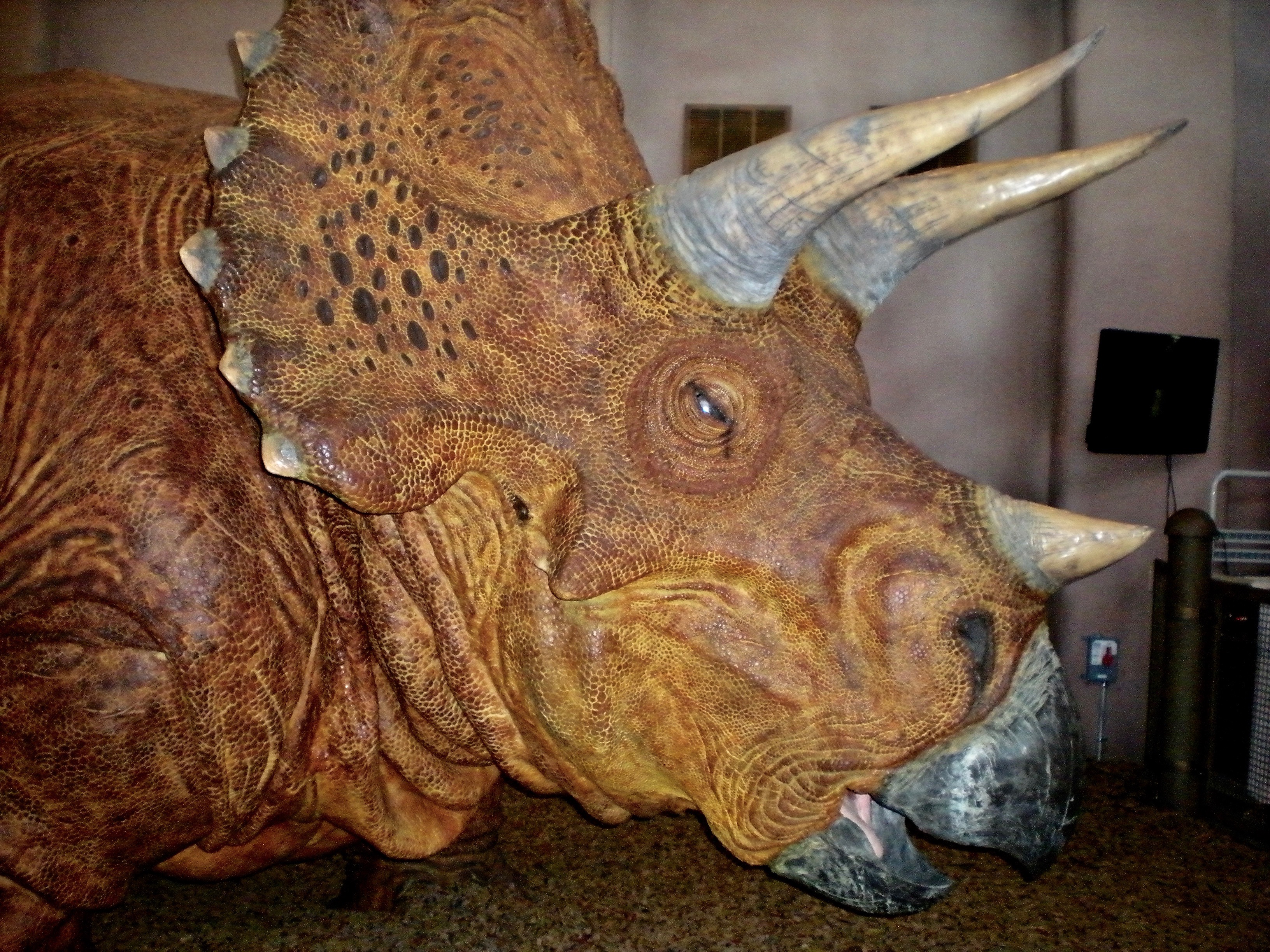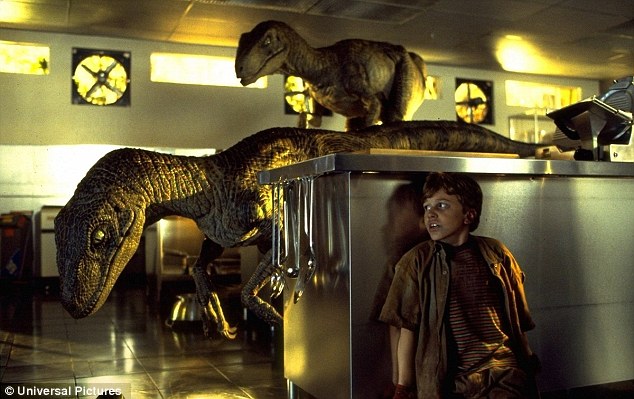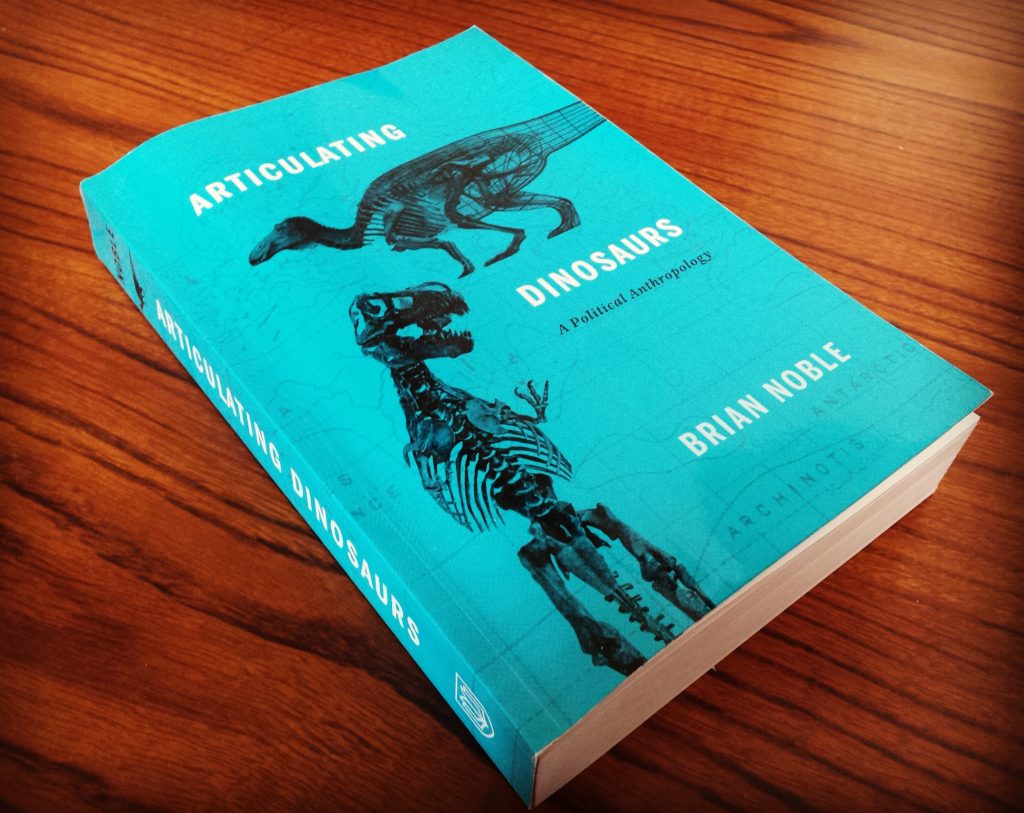 Photo of Animated Triceratops at Universal’s Island of Adventures, Orlando, FL
Photo of Animated Triceratops at Universal’s Island of Adventures, Orlando, FL
What do the dinosaurs of the past have to do with us today?
The first time I remember thinking about what really makes a dinosaur, was watching Steven Spielberg’s academy award-winning picture Jurassic Park (1993), where dinosaurs are brought back to life through the magic of DNA cloning. In the film, the small island of Isla Nublar is the home to a theme park built from the imagination of John Hammond, a billionaire philanthropist who spares no expense.
Adapted from Michael Crichton’s novel, Jurassic Park is a wildlife park of cloned dinosaurs that escape their enclosures and start hunting the humans. In one of the film’s most iconic scenes we find siblings Lex and Tim trapped in a kitchen by two raptors. As can be seen in the picture below the raptors tower over the children seeking out the siblings in a terrifying game of hide and seek.
 Photo Copyright Universal Studios, Film Stills: Jurassic Park (1993)
Photo Copyright Universal Studios, Film Stills: Jurassic Park (1993)
But according to Jurassic World’s palaeontology consultant, Jack Horner, the horse-sized beasts with fangs and claws that dawn the screen as raptors, have not been portrayed accurately as discussed in an article from the Guardian:
“Known simply as “raptors” in the film, Velociraptor was portrayed as a person-sized, terrifyingly fast and vicious predator that tormented the unfortunate Sam Neill and his Hollywood co-stars. A star was born (Velociraptor, not Neill) – but the portrayal was inaccurate, both in terms of size (in reality, Velociraptor stood barely half a metre high), and its lack of feathers (“quill knobs” proving that Velociraptor was feathered were overlooked until 2007 when they were discovered on the forelimb).
Size-wise, and in terms of its large sickle-shaped talons on each foot, the dinosaur in the film is more like Velociraptor’s larger dromaeosaurid cousin, Deinonychus (although it too was a feathered theropod).
It is speculated that this incorrect portrayal came about because of mislabelling of Deinonychus as a subspecies of Velociraptor in the 1988 American book, Predatory Dinosaurs of the World, whose author, Gregory Paul, is credited as an inspiration by Crichton at the end of his first novel.”
However, it’s also been noted elsewhere that Michael Crichton consulted many experts and intentionally modeled the raptors after other dinosaurs. Essentially Crichton renamed Deinonychus to Velociraptor as he felt the name was “more dramatic.”
The new film Jurassic World (2015), which came out much later offered an opportunity to rectify the situation. However, the raptors were such central characters to audiences that in the making of Jurassic World the same raptor aesthetic from the original was kept. Fiction allows for these liberties to take place. Horner explains they did this by building into the story that the scientists used DNA from other animals to cause slight mutations. Voila, a little sleight of hand from the Hollywood film makers allowed the newly invented images to seem both plausible and realistic.
 Photo Copyright Universal Studios, Film Stills: Jurassic World (2015)
Photo Copyright Universal Studios, Film Stills: Jurassic World (2015)
The social construction of dinosaurs is not lost on all characters in the Jurassic Park film, as Henry Wu, lead scientist, states: “nothing in Jurassic World is natural, we have always filled gaps in the genome with the DNA of other animals. And if the genetic code was pure, many of them would look quite different. But you didn’t ask for reality, you asked for more teeth.” Wu’s point? The dinosaurs you see are not objective representations of the dinosaurs of the past, but rather of what we imagine, what we want, and most importantly for cinematic appeal – what scares us.
What then does it mean to reconstruct a dinosaur? Or to animate a dinosaur? This is one of the questions raised in Brian Noble’s new book Articulating Dinosaurs: A Political Anthropology that I’ve been reading as of late. The book addresses how dinosaurs are articulated into apprehensible beings, or in Noble’s own words:
“The ultimate proposition of this book, then, is that articulating dinosaurs is a mode of articulating power in different ways — Dinosaurs as politics. The book is quite literally, a political anthropology of dinosaurs. It is, at the same time, an extended case study, tracing the public emergences and transformations of two dinosaurs in particular, following how politics and natures of dinosaurs, as with any creatures of public concern, are always and already intimately entwined.”
 Photo of Articulating Dinosaurs Book
Photo of Articulating Dinosaurs Book
While I am still reading and digesting the book, it brings to light how our social relations are entangled in the very ideas and notions of what constitutes a dinosaur for us today.
A short snippet of a quote from a young museum goer named Amy drives the trajectory of the book – that dinosaurs are the “story about us.” The quote opens the book, is returned to again on a few occasions, and as Noble elaborates on Amy’s point:
“we are the authors of their (dinosaurs) becoming. They are quite literally “our” story, the story from us, made by us, and so necessarily a part of us, rather than autonomous beings in their own right.”
The dinosaurs we see today in films and even in museums are not necessarily objective representations.
What I have enjoyed most about the book so far is that the theoretical underpinnings are helpful for understanding other thematic areas and a broad array of topics — such as my own interest in the study of religion. The things we often find catalogued as religions are not necessarily objectively categorized, but instead are a social construction embedded in relations. As has been discussed on this blog and in many other places, it is the very naming of something religious that legitimizes and substantiates particular ideologies, movements, organizations, leaders, and interests. One must then consider who is involved in said naming and recognize that we (particularly the scholar) are the authors of its (religion’s) becoming and that “religion” is our story – from us, made by us, a part of us – not something autonomous.

What will be interesting Jason, is to see how you put this to work in regard to writing / research on religion, spiritual experience, etc. Any specific thinking in that direction? Very glad to see the work is stimulating this kind of turn for you.
Thank you for the note Brian!, And to answer your question, yes – I hope to extend on the thought in this post at some point in a longer piece that deepens the latter aspect of the making of “religion,” while still staying grounded in the example I use here that is helped by your theoretical frame in Articulating Dinosaurs.